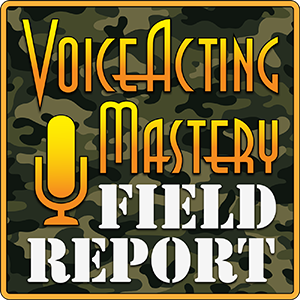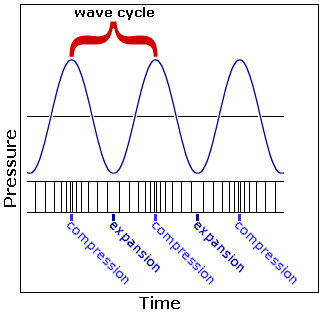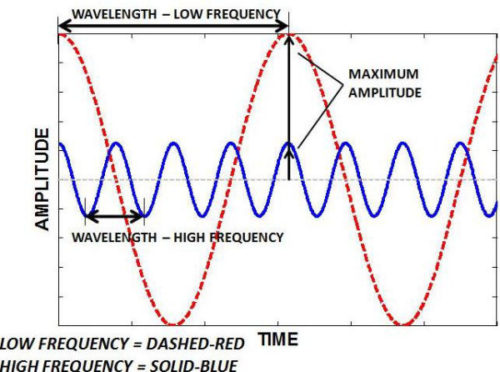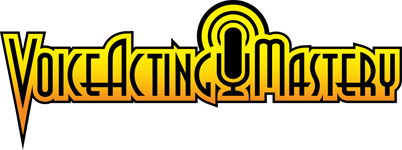VAMFR 012 | Interview with Tony Oliver, Part 1

VAMFR 012 | Interview with Tony Oliver, Part 1
Welcome to episode 12 of the Voice Acting Mastery: Field Report podcast!
In this episode our correspondent, Tom Bauer is honored to interview one of his personal voice over mentors: Tony Oliver.
Tony’s résumé runs the gamut in the entertainment and voice over industry. He is probably most famous for his voice acting work as Rick Hunter in the ever-popular anime series Robotech. He’s also played the voice of the mischevious Lupin in the Lupin the Third anime TV series. Tony worked for many years as a writer and producer on the famous Mighty Morphin’ Power Rangers television series for Saban Entertainment. If that wasn’t enough, Tony is also a talented director and teacher, directing such popular anime titles as Gurren Lagann and Hunter X Hunter.
Tom first met Tony when he took one of his voice acting classes in November of 2012. Soon after, Tom had the good fortune of getting to know Tony as a director when they worked together on the anime series, Magi: The Kingdom of Magic, where Tom was cast as Nero and Ren Hakuyu.
In this first episode, Tom focuses on Tony’s early career. Tony explains how he got his start as a voice actor and how his breadth of experiences and the challenges he faced led him to where he is today as a voice over director. He also stresses the importance of continually training yourself as an actor so that you’re prepared for anything when it comes time to perform. But Tom is happy to let Tony tell you more about that!
The VAM Field Report will be released on the 1st Wednesday of every month so stay on the look out for it!
Download VAM Field Report Episode #12 Here (MP3)
VAM 116 | The Computer Skills and Audio Knowledge You Need to Be a Voice Actor, Part 3
Welcome to episode 116 of the Voice Acting Mastery podcast with yours truly, Crispin Freeman!
As always, you can listen to the podcast using the player above, or download the mp3 using the link at the bottom of this blog post. The podcast is also available via the iTunes Store online. Just follow this link to view the podcast in iTunes:
http://www.voiceactingmastery.com/podcast
In the first episode of this three part series, I outlined the basic computer skills you need in order to be able to record professional quality audio in your home studio. In the second episode, I expanded on that subject and explained the actual process of digital recording using simple metaphors. After listening to those episodes you should have a much clearer understanding of how your computer works and how your microphone and audio interface process and record audio as digital information. If you haven’t listened to the the previous two episodes in this series yet, I highly recommend that you review them both before continuing. As I conclude my discussion of this topic, I’m going to be building on the information I shared with you in the last two episodes.
In this third and final part of the series I want to talk about how to use your home recording setup to its fullest potential. I’ll be revealing to you the settings that professionals use to maximize the quality of their recordings. I’ll explain the differences between different digital audio formats, and I’ll also be warning you about some of the most common mistakes voice actors make when recording at home so you can avoid them! As I’ve mentioned previously, it may be good for you to have a notebook nearby to write down the terms and ideas I’ll be discussing. After listening to this series of episodes, you should have a solid foundation for understanding the fundamentals behind professional quality digital audio recording.
If you have any thoughts, thank you’s or questions about this 3-episode series, please feel free to leave a comment on this blog post!
I’m also getting ready to do my next round of Q&A here on the podcast, so if you’d like a chance to have your question answered in a future episode, you can call the Voice Acting Mastery phone line at 323-696-2655. Please remember to state your first name and what city in the world you’re calling from before leaving your message. Thanks for listening, and I’ll see you in the next episode!
Download Voice Acting Mastery Episode #116 Here (MP3)
VAM 115 | The Computer Skills and Audio Knowledge You Need to Be a Voice Actor, Part 2
Welcome to episode 115 of the Voice Acting Mastery podcast with yours truly, Crispin Freeman!
As always, you can listen to the podcast using the player above, or download the mp3 using the link at the bottom of this blog post. The podcast is also available via the iTunes Store online. Just follow this link to view the podcast in iTunes:
http://www.voiceactingmastery.com/podcast
In the last episode, I outlined the basic computer skills you need in order to be able to record professional quality audio in your home studio. I spoke in depth about the structure of your computer and how it interfaces with any external audio devices you may be using such as a USB microphone or a USB audio interface. If you haven’t listened to the previous episode yet, I highly recommend that you review it before continuing. As I move forward, I’m going to be building on the information I shared with you last time.
In this episode I want to talk in depth about the process of recording audio on a professional level. Most beginning voice actors do not have a solid understanding of what it means to record professional level audio. With the proliferation of smart phones and other consumer level portable digital recording devices, we’ve all become very accustomed to recording both audio and video on the spur of the moment. We often watch videos and listen to audio that our friends and family post on social media websites. While these shared moments of audio and video may be spontaneous and candid, they almost never approach a level of quality that is acceptable for professional audio environments. Just imagine if the sound in the next big movie or TV show you decided to watch was recorded on your cell phone. It would be difficult for you to listen to it for long without being frustrated by the low quality of the audio. It takes studio professionals countless hours of focused attention and hard work to achieve the crystal-clear dialogue, sound effects and music you hear in your favorite Hollywood films and television series. If your goal is to be a professional voice actor who regularly collaborates with these industry professionals, you need to know how to achieve a more rarified level of audio quality in your own recordings.
I’m going to explain to you the basics of digital recording and what it takes to record audio on a professional level from your home studio. While a complete course on how to record studio-grade audio is beyond the scope of this podcast, I do want to provide my listeners with straightforward metaphors for understanding the process. I also want to address some common mistakes and misconceptions beginners often stumble over when approaching digital recording. I’ll explain in detail what’s going on inside your audio equipment so you’ll be better prepared for the next episode, where I’ll share best practices and more mistakes to avoid when recording yourself. While some of this might seem complicated at first, I’m going to do my best to simplify things. I want you to have a solid understanding so you can spend more time focusing on your voice acting performances and less time stressing about technical issues, while still producing professional quality audio. As I mentioned in the last episode, it may be good for you to have a notebook nearby to write down some of the terms and ideas I’ll be discussing. Let’s get started!
As always, you can check out the Toolbox section of this website for my recording software and hardware recommendations.
In the beginning of this episode, I promised to include diagrams here on the website to help show how sound actually works. When you hear something, your ears are responding to sound waves that are moving through the air. These sound waves compress and stretch the molecules in the air around you, creating vibrations that your ear drums can detect. The faster the compression and stretching of air that occurs, the higher the perceived pitch of the sound. The slower, the lower the pitch. You can see that compression and stretching in the diagram below.

This compression rate is also called the frequency of the sound, since the pitch of a sound is determined by how frequently the sound waves strike your ear drum within a certain time period. The volume of a sound depends on the size of those waves, which is also called their amplitude. The higher the amplitude of a sound wave, the louder you perceive it to be and vice versa. So a quiet, high pitched sound has a low amplitude and a high frequency, while a loud, low pitched sound has a high amplitude and a low frequency. You can see this in the diagram below. The solid blue line is the quiet, high pitched sound wave and the dashed red line is the loud, low pitched sound.

Download Voice Acting Mastery Episode #115 Here (MP3)
VAM 114 | The Computer Skills and Audio Knowledge You Need to Be a Voice Actor, Part 1
Welcome to episode 114 of the Voice Acting Mastery podcast with yours truly, Crispin Freeman!
As always, you can listen to the podcast using the player above, or download the mp3 using the link at the bottom of this blog post. The podcast is also available via the iTunes Store online. Just follow this link to view the podcast in iTunes:
http://www.voiceactingmastery.com/podcast
In the next few episodes I want to discuss the technical skills you need in order to succeed as a voice actor. It wasn’t so long ago that voice actors did not need to concern themselves with the technical aspects of recording and manipulating audio. Up until the late 20th Century, most professional recording equipment was far too expensive for individuals to own. The majority of voice actors didn’t have their own home studios, nor were they expected to have the expertise to run sophisticated recording equipment, so most of that was handled by studio engineers. In the 21st Century, that’s all changed. With the advent of the internet, digital audio, and more inexpensive home recording equipment, every voice actor is now expected to be able to record themselves at home on a professional level and to be able to manipulate and distribute audio files online to casting directors and clients.
This means that if you want to be professionally competitive as a voice actor, you need to master some technical skills in two important areas: Computers and Audio Recording. I’m going to spend this episode outlining what you must know about Computers in order to thrive in the world of voice over. In the next episode, I’m going to discuss the ins and outs of Audio Recording and what mistakes to avoid when trying to record professional level audio.
I realize that some of you may be nervous about learning technical skills. You may find computers and professional recording equipment confusing or intimidating. Fortunately, it has never been easier to learn how to use this technology to help advance your career. In addition to this podcast, there are classes online, instructional videos on YouTube and entire online communities of people working to learn the same skills you are striving to master. So don’t despair! Instead, I encourage you to imagine the satisfaction you will get from mastering these technical skills and the confidence you’ll gain from knowing you can handle all the technical aspects necessary to further your voice acting career. Such knowledge is cumulative: once you learn the basics, it’ll get easier for you to understand any new developments in the worlds of computers and audio recording. So I hope you’re as excited to learn these skills as I am to share them with you!
As always, you can check out the Toolbox section of this website for my recording software and hardware recommendations.
I also reference some Macintosh utility software in the episode.
For bootable backups, I recommend SuperDuper.
For maintaining a health disk directory, I recommend Disk Warrior.
Download Voice Acting Mastery Episode #114 Here (MP3)
VAMFR 008 | Interview with Erika Harlacher, Part 2

VAMFR 008 | Interview with Erika Harlacher, Part 2
Welcome to episode 8 of the Voice Acting Mastery: Field Report podcast!
In this episode our correspondent, Tom Bauer, concludes his interview with the prolific and mult-talented Erika Harlacher.
Erika has been featured in a number of Anime titles, including roles such as Princess Asseylum Vers Allusia in Aldnoah.Zero and Sadira in Killer Instinct.
In the previous episode, Erika and Tom talked about how she got her start in voice acting and some of the struggles she had coping with her self-doubt. Erika has found that being patient with herself and developing a strong, emotional support system of friends and colleagues has helped give her the confidence she needs when performing in the booth.
In this episode, Tom and Erika discuss the importance of taking classes as well as practicing on your own in order to develop and expand your skill set as an actor. If you are pursuing a professional voice acting career, it is vitally important for you to have faith in your acting abilities, especially when you are called on to perform in the different realms of Voice Over such as Anime and Video games. Erika also talks about her plans for the future as well as giving some practical advice for those wanting to get into Voice Over. Let’s hear what she has to share!
The VAM Field Report will be released on the 1st Wednesday of every month so stay on the look out for it!
Download VAM Field Report Episode #8 Here (MP3)
VAMFR 007 | Interview with Erika Harlacher, Part 1

VAMFR 007 | Interview with Erika Harlacher, Part 1
Welcome to episode 7 of the Voice Acting Mastery: Field Report podcast!
In this episode our correspondent, Tom Bauer, begins his interview with the prolific and mult-talented Erika Harlacher.
Since this is Tom’s first episode for the Voice Acting Mastery: Field Report, he wanted to interview a very gifted voice actor who is just starting her voice acting journey and making leaps and bounds in her career. Erika has been featured in a number of Anime titles, including roles such as Princess Asseylum Vers Allusia in Aldnoah.Zero and Ami Kawashima in Toradora! She’s also performed in video games, playing characters like Kyoko Kirigiri in Dangan Ronpa: Trigger Happy Havoc and Sadira in Killer Instinct.
In this episode, Erika talks about how she embraced the creative side of her personality and the steps she took to break into voice acting. Tom and Erika discuss at length the struggles she continues to face as an artist as well the importance she places on finding a support system to help her stay true to herself and pursue her dreams. We’re very grateful to Erika for sitting down with Tom and sharing her experience as an up and coming voice actor. As you listen to their interview, I think you’ll agree that her positivity and energy are infectious!
The VAM Field Report will be released on the 1st Wednesday of every month so stay on the look out for it!
Download VAM Field Report Episode #7 Here (MP3)
